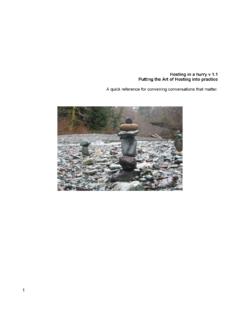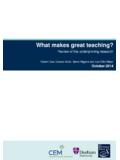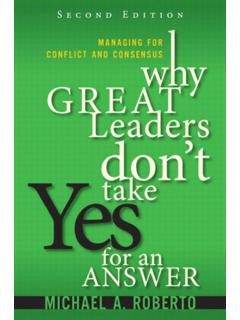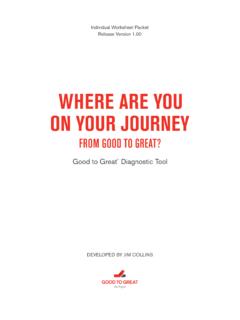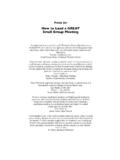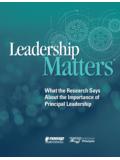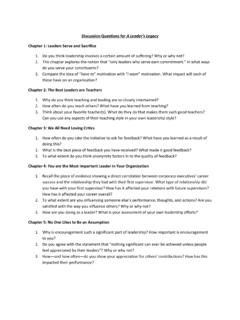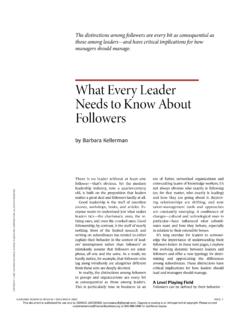Transcription of From consultation to participatory engagement: a concept ...
1 From consultation to participatory engagement: a concept paper and design plan for creating ownership and activating leaders in community engagement initiatives Chris Corrigan, Harvest Moon Consultants Bowen Island, BC, Canada There are essentially two paths to finding out what people think of a new set of ideas: engagement that seeks to simply reform the status quo, or participatory community engagement that leads to a transformational shift in the status quo. The first requires only that the system itself (composed of a consulting body,, stakeholders, ideas and resources) be brought together to comment, collaborate, or plan about existing models of public service.
2 The second requires much deeper exploration, introducing new mental models, completely new ways of doing business and transforming stakeholders to co-creators. Most forms of community engagement practiced in the public sector are incremental and seek only to initiate small scale change. These include consultation on changing programs and services, refinements to existing structures of government or creating new initiatives in line with a government's stated policy objectives. Governments in general are loath to change much about the fundamentals of public service delivery. Large scale change is risky. With a high chance of failure, political capital can wither away as well.
3 So most governments, even as they champion reform-based agendas, rarely undertake truly transformational shifts in their ways of doing business. In recent history is British Columbia only a few truly transformation shifts in public policy have occurred. These might be said to include: Creation of the treaty process and the subsequent rights and reconciliation agenda. Still very much a work in progress, these new ways of working with First Nations completely overturned the ways in which provincial government had dealt with indigenous issues. Starting in 1973 and moving through a series of court cases culminating in the 1999 Haida/Taku ruling, the provincial government was forced to respond to the reality that First Nations' rights and title were active in the legal landscape and posed a significant threat to the government's status quo with respect to resources, land use and citizenship.
4 Undertaking this process required a mind shift in government and a different approach to working with First Nations not only as stakeholders but as co-owners of lands and resources. Electoral reform. Following the election of the Liberal government in 2001, a citizen's based electoral reform commission was established. It drew a man and woman at random from the voter's lists of every riding in the province and set them to work studying and making recommendations about a new form of electoral process in British Columbia. They reported in 2006 and a new system was placed on the ballot as a referendum question. It failed by the narrowest of margins. Again in this case, transformational change involved a group of stakeholders being given the responsibility to redesign the system, and required a massive shift in mental models to even conceive of the new system, let alone reach consensus on it's implementation.
5 When we are initiating public policy change initiatives we have a choice. Most of the work done in First Nations child and family services and education requires a fundamental shift in mental models because non-indigenous models of child rearing, education, learning and family and community support are at odds with indigenous models. In order to effect transformational and meaningful change in First Nations communities, both indigenous and non-indigenous governments must work at transforming their mental models of not only education and learning, but also HOW change is effected and how leadership can be different. This paper provides a road map for transformational community engagement that seeks to shift the mental models that underlie so much policy and programming directed at First Nations communities.
6 It must be remembered that these mental models are held not only by non-indigenous governments and organizations but by indigenous ones as well. The legacy of colonization is that we often make ourselves appear in the forms of the colonizer in order to work with the colonizer. Transformative change in First Nations communities requires the opposite to happen. A word on mental models Mental models are those frames of reference that define our thinking and how we view the world. They are frames that we take for granted, and to view or own mental models is a bit like trying to see the colour of our own eyes without a mirror. Our mental models inform everything we do and many clashes of ideas between indigenous and non-indigenous organizations can be traced to misunderstandings of mental models, both of our own and of the other.
7 For example, an overwhelming mental model in non-indigenous society is that of scientific materialism. Over the past 450 years in European society, scientific materialism has brought a worldview that has privileged what can be objectively known and proven through empirical methods. Things only have reality if they can be studied objectively. If a thing can be measured, it can be managed. This has proved very useful in understanding the world from a scientific point of view but it has done a great disservice to what is invisible to the eye: namely culture and values. Scientific materialism equates culture and values with collective and individuals behaviours (you can know a people by studying their ceremonies and songs, you can know a person by watching what they do).
8 Such objective analysis results in tragic misunderstandings. For example, missionaries who watched the potlatch in action saw only the distribution of wealth and felt the affront of capitalist notions of property, frugality and hard work and had the ceremony banned. Of course, potlatching societies use the these ceremonies to practice a wide range of important cultural and governmental duties including governance, social services, religion, law and order, resource management, and community planning. Perhaps missionaries knew this, but most stated accounts discussed the visible and measurable effects of the potlatch, and this empirical methodology resulted in the wrong conclusion about what was good for a people.
9 Similarly on the individual level, a person's values are not synonymous with their behaviours. Many First Nations people have experienced the results of this false assumption in the world of social work for example, where children are routinely removed from a home because a social worker draws conclusions about a parent's values based on the state of their house. In education a child's inability to learn in a classroom setting often leads to that child being diagnosed with a learning disability, labeled as having a problem and being medicated, punished or expelled. The fact is that many children learn in many different ways and a child who is fidgety in class may not be bored, but may in fact be actively processing learning using the limited kinesthetic tools available in the environment.
10 Put that child in a place where moving around is welcome, and the learning accelerates. Human beings are very skillful at convincing themselves that their worldview is not only correct but is indeed the only way to see the world. For transformational change to occur, mental models must be questioned. Leaving mental models and worldviews unexamined results in a more superficial engagement with change. In the context of policy change with respect to children and families, moving from a system that is a legacy of colonization to one that re-establishes a set of holistic indigenous values in which children are sacred is a huge shift for non-indigenous society to make.
